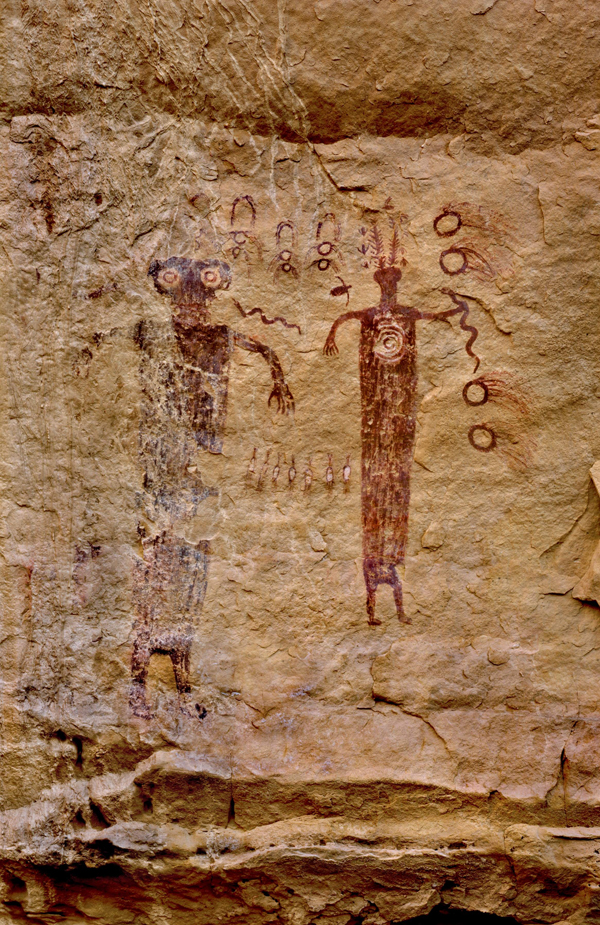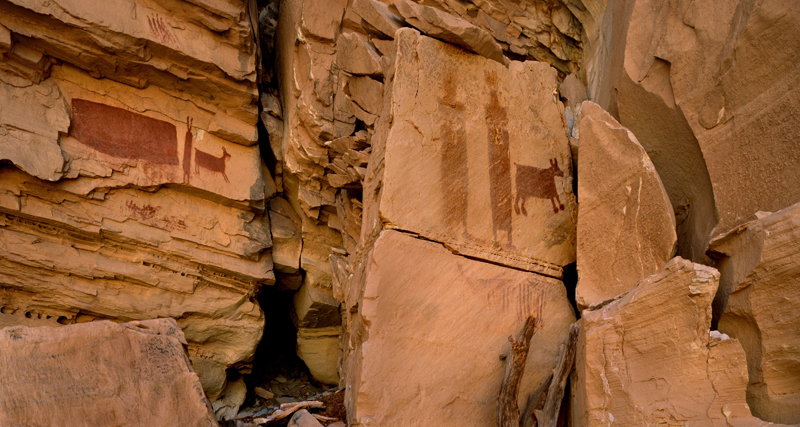Merrill-Cazier Library Hosts Utah Arts Council Traveling Exhibit
– Utah State University’s Merrill-Cazier Library sponsors “The Art in Rock Art,” a Utah Arts Council Traveling Exhibit. The exhibition features photographs by USU professor Craig Law that chronicle Utah’s prehistoric rock art.
The exhibition can be seen in the Merrill-Cazier Library atrium gallery Aug. 13 through Sept. 15. The traveling exhibit is part of the library’s ongoing exhibit series. Law will be featured in an exhibit lecture and public reception Thursday, Sept. 2, 5-6:30 p.m., Merrill-Cazier Library, Room 101. The lecture and reception are free and all are invited.
The photographs included in “The Art in Rock Art” have not previously been exhibited and were selected from a larger documentary project called the BCS (Barrier Canyon Style rock art) Project conducted by Law and BCS project director David Sucec.
Utah is home to numerous world class prehistoric rock art sites. These sites and the ancient artworks are a critical record of Utah and North American cultural history. Yet, these sites are virtually unprotected. Many sites have been seriously compromised by vandalism, others by accelerated aging and weathering.
Beginning in 1991, the BSC Project sought to document any and all known sites of prehistoric Barrier Canyon style rock art in Utah. To date, the project has photographed more than 212 rock art sites.
Law, BCS Project photographer, is a professor in the Art Department at USU. He is a nationally acclaimed photographer whose work has been exhibited in many university and private galleries throughout the country and abroad. His photographs of indigenous pictrographs and petroglyphs in the Barrier Canyon country of Utah were published in a feature story in “Smithsonian Magazine.” In 2008, he was the recipient of the national Oliver Award from the American Rock Art Research Association for his work on the Barrier Canyon Style Project.
Sucec is a visual artist, scholar, independent curator and teacher who lives in Salt Lake City, Utah.

The iconography (symbolic meaning of images) of this panel suggests that we are looking at representations of a Shaman (left with oversized eyes) and, likely, and the Mother of Animals (right with plant antennae and holding a wriggling snake).

